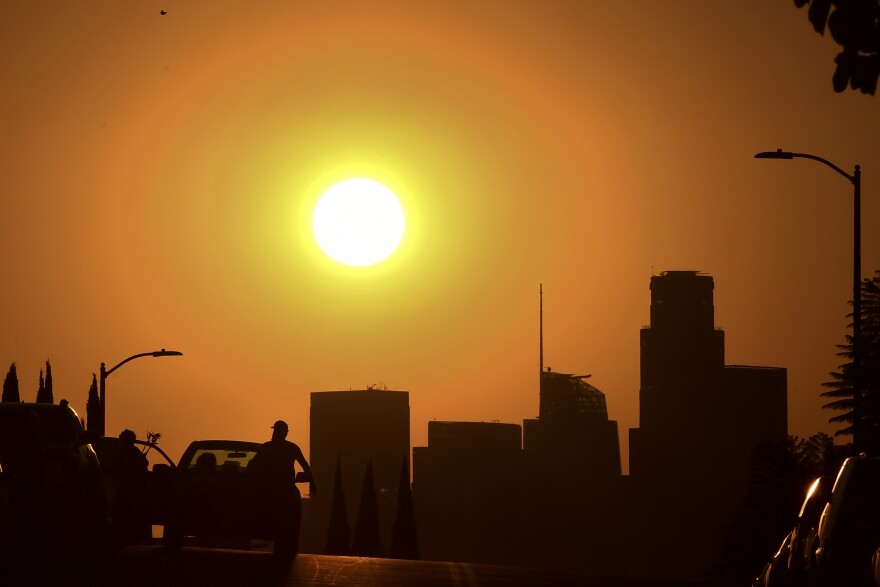A new United Nations report says the world needs to do more to protect the billions of people already suffering from the impacts of the climate crisis, while at the same time scaling up efforts to rapidly reduce greenhouse gas emissions within this decade.
Here are some takeaways from the report:
- 1.1 degrees is already causing devastation: The report, part of the Intergovernmental Panel on Climate Change’s Sixth Assessment, focuses on adapting to impacts that have already arrived with just 1.1 degrees Celsius of global heating above the pre-industrial period — like drought, which is contributing to food shortages and extreme heat endangering people’s lives around the world. Here in California, we’re feeling the effects through more frequent and bigger wildfires, long-running drought, extreme heat and sea level rise.
- Protecting nature is essential: The authors write that the fate of ecosystems, plant and animal species and humans are intertwined, and that protecting nature is essential to avoiding the worst impacts of the climate emergency. They estimate there are more than 3 billion people who are extremely vulnerable to accelerating climate impacts. Safeguarding natural ecosystems that can pull carbon from the atmosphere will be key to protecting people’s and the planet’s wellbeing.
- Urgent emissions cuts and resilience strategies are necessary, and equity must be central to those efforts: The report emphasizes that the countries contributing the least to planet-heating emissions are suffering the most. Though China has surpassed the U.S. in annual emissions, the U.S. remains the largest historical emitter of greenhouse gasses fueling global heating as we are experiencing it today. But the impacts are unequal: the report states that increasingly severe weather events have left millions of people with acute food and water insecurity, particularly in Africa, Asia, Central and South America, on low-lying islands and in the Arctic.
- It’s not just climate change, it’s the economic divide: From Los Angeles to Dhaka, how vulnerable communities are to climate impacts isn’t just about physical geography. The researchers write that economic inequity, the legacy of colonialism, exploitation of natural resources for development, and marginalization related to race and gender greatly affect a community’s ability to adapt to the effects of the climate emergency. Here in L.A., for example, low-income people of color are more likely to experience negative health impacts from increasing temperatures as a result of decades of racist policies that pushed communities of color to neighborhoods with more concrete and polluting industry and fewer trees to cool the air.
- There’s still time, but we need to act much faster: The authors, all of them coming from 67 different countries, emphasize that this decade is crucial for climate action, and that many of the impacts can be reduced if we rapidly move away from burning fossil fuels, like coal and oil. But so far, those efforts have not been nearly enough. Though the U.S.’s emissions are slowly trending down, global emissions continue to rise. Each degree of warming has accelerating consequences, and scientists have been sounding the alarm to keep warming to no more than 1.5 degrees Celsius.
- Cities are key to the solution: Home to more than half of the world’s population, cities are central to adaptation and resilience efforts, the authors write. Transforming how we get around, how we power our homes and how we reduce our consumption of resources like water are key pieces of creating a livable future. Natalie Hernandez, the director of climate planning and resilience for the non-profit Climate Resolve, says investing in bike lanes and tree shade are examples of how local governments may act in the face of climate change.
The report sets the stage for the next U.N. climate conference in November in Sharm El-Sheikh, Egypt. You can read more about what some of the worst climate scenarios would look like in L.A. here.










